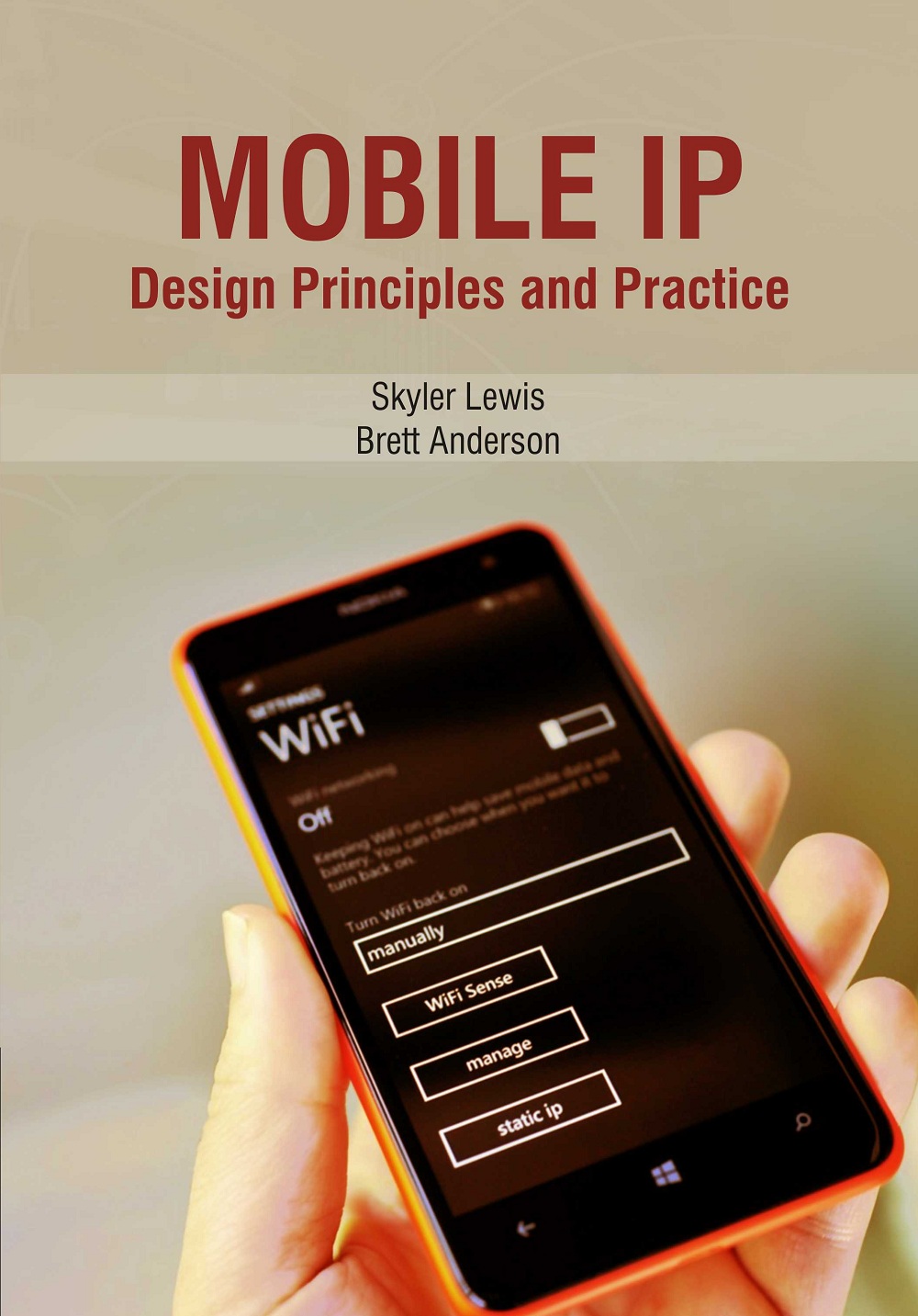Mobile IP : Design Principles And Practice Skyler Lewis & Brett Anderson
- ISBN: 9781788820714
- Edition: 1st
- ©Year: 2021
- List Price : 160
About the Book
Mobile IP is most often found in wired and wireless environments where users need to carry their mobile devices across multiple LAN subnets. Examples of use are in roaming between overlapping wireless systems, e.g., IP over DVB, WLAN, WiMAX and BWA. Mobile IP is not required within cellular systems such as 3G, to provide transparency when Internet users migrate between cellular towers, since these systems provide their own data link layer handover and roaming mechanisms. However, it is often used in 3G systems to allow seamless IP mobility between different packet data serving node (PDSN) domains. Mobile IP is an Internet Engineering Task Force (IETF) standard communications protocol that is designed to allow mobile device users to move from one network to another while maintaining their permanent IP address. Defined in Request for Comments (RFC) 2002, Mobile IP is an enhancement of the Internet Protocol (IP) that adds mechanisms for forwarding Internet traffic to mobile devices (known as mobile nodes) when they are connecting through other than their home network. Mobile IP communication protocol refers to the forwarding of Internet traffic with a fixed IP address even outside the home network. It allows users having wireless or mobile devices to use the Internet remotely. Mobile IP is mostly used in WAN networks, where users need to carry their mobile devices across different LANs with different IP addresses. Mobile IP is not a wireless protocol. However, it could be employed for the IP infrastructure of cellular networks.The principle objective of this book are to provide an introduction to basic concepts and methodologies for mobile communication and to develop a foundation, that can be used the basis forfurther study and research in the field of communication engineering.
Contents: 1. Introduction, 2. Quick Overview of IP and Routing, 3. Mobile IP Overview, 4. Advertisement and Mobile IP, 5. Registration and Mobile IP, 6. Delivering Datagrams, 7. Route Optimization, 8. Tunneling, Detection and Management Information Bases in Mobile IP, 9. IP Version.
Skyler Lewis is an associate professor of engineering. He received his Ph.D. in electrical engineering and his M. Eng. in electrical engineering and computer science. Before attending University, he worked at Intel as a logic and circuit designer on the Itanium and Pentium II processors. Since then, he has consulted at many famous design companies. He loves teaching, exploring and developing new technologies, traveling, wind surfing, rock climbing, and playing the Guitar. His recent exploits include researching sketching interfaces for digital circuit design, acting as a science correspondent for a National Public Radio affiliate, and learning howto kite surf. He speaks four languages and looks forward to learning more in the nearfuture.
Brett Anderson is a Research Fellow at Research Center investigating mobile wireless networking and dynamic configuration protocols. He is the editor for several ACM and IEEE journals for areas relating to wireless networking. Brett Anderson has served on the Internet Architecture Board of the Internet Engineering Task Force and on various committees for the National Research Council. He has authored a book on Mobile IP and has published a number of papers and award-winning articles in the areas of mobile networking, resource discovery, and automatic configuration for mobile computers. Brett Anderson is very passionate about all reading, writing, and veterans' rights and benefits.

